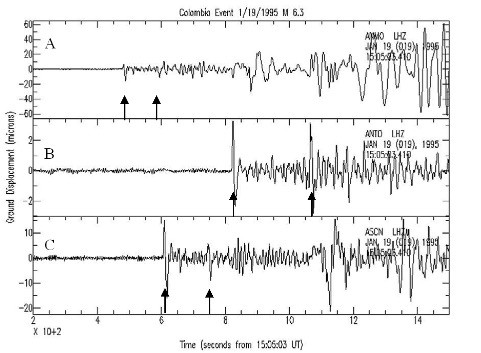Diagram and label the three types of plate boundaries
What will be an ideal response?
Convergent boundaries occur in areas of crustal collision and subduction.
Divergent boundaries occur in areas of seafloor spreading, where upwelling material from the mantle forms new seafloor.
Transform boundaries occur where plates slide past one another, usually at right angles to seafloor spreading.
You might also like to view...
_____ currents flow equatorward and are shallow and broad
a. Polar b. Counter c. Western boundary d. Eastern boundary e. Transverse
How does water dissolve sodium chloride (NaCl)?
A) ?Water molecules neutralize sodium ions (Na+) and chloride ions (Cl-). B) ?The polarity of water causes the sodium ion (Na+) to separate from the chloride ion (Cl-). C) ?When seawater evaporates, its ionic components combine to dissolve table salt. D) ?Water molecules expand causing sodium ions (Na+) and chloride ions (Cl-) to decompose.
Three seismograms for a single earthquake with an epicenter in Columbia are shown below. The data are from stations that were at very different distances from the epicenter. Arrows denote arrival of P and S waves. Note: Vertical scales are not all the same.  Suppose two earthquakes with the same magnitude, depth, and relative motion occur in two cities, A and B. City A is near a plate boundary, city B is far from a plate boundary. Which earthquake would cause the most shaking farthest from the epicenter?
Suppose two earthquakes with the same magnitude, depth, and relative motion occur in two cities, A and B. City A is near a plate boundary, city B is far from a plate boundary. Which earthquake would cause the most shaking farthest from the epicenter?
A. The one in city A because there are few nearby faults B. The one in city B because there are many nearby faults C. The one in city A because there are many nearby faults D. The one in city B because there are few nearby faults
A group of individuals of a particular type that are able to successfully interbreed is called a/an
A. population. B. community. C. species. D. ecosystem.